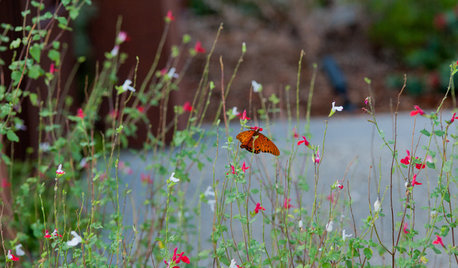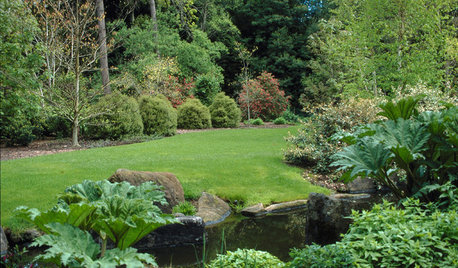Help save Monarch Butterfly habitat
jakkom
17 years ago
Related Stories

GARDENING FOR BUTTERFLIESBe a Butterfly Savior — Garden for the Monarchs
Keep hope, beauty and kindness alive in the landscape by providing a refuge for these threatened enchanters
Full Story
EARTH DAYCreate a Container Wildlife Habitat for Hummingbirds and Butterflies
Don’t let limited space prevent you from welcoming wildlife into your garden
Full Story
CALIFORNIA NATIVE PLANTSGreat Design Plant: Asclepias Is Attractive to Monarch Butterflies
Increase monarch butterfly populations in California by planting stunning native milkweeds
Full Story
FALL GARDENINGWhat Monarch Butterflies Taught Me About Garden Design
Thinking like a butterfly leads to fresh perspectives in the garden and in life
Full Story
GARDENING GUIDESGreat Design Plant: Asclepias Incarnata for a Butterfly Garden
Beautiful swamp milkweed makes it easy to help monarchs and other pollinators in eastern U.S. gardens
Full Story
GARDENING GUIDES6 Steps to Creating Your Butterfly Garden
Encourage these fanciful winged beauties to visit your garden while helping restore their fragmented habitat
Full Story
GARDENING FOR BUTTERFLIESBring on the Birds: Natural Habitat Ideas for Gardens of All Sizes
Provide nesting, watering and perching spots inspired by the Costa Rican jungle and watch the birds flock on over
Full Story
GARDENING AND LANDSCAPINGBe a Citizen Scientist to Help Wildlife, Learn and Have Fun Too
Track butterflies, study birds, capture stars ... when you aid monitoring efforts, you’re lending Mother Nature a hand
Full Story
GARDENING GUIDES6 Plants That Beat Butterfly Bush for the Wildlife Draw
It's invasive, a nonnative and a poor insect magnet. Check out these better alternatives to butterfly bush in the garden
Full Story
GARDENING GUIDESYou Don't Need Prairie to Help Pollinators
Woodlands, marshes, deserts — pollinators are everywhere
Full Story





Mikey
youreit
Related Professionals
Allen Landscape Architects & Landscape Designers · New Bedford Landscape Architects & Landscape Designers · Allentown Landscape Contractors · Arlington Landscape Contractors · Arlington Landscape Contractors · Hicksville Landscape Contractors · Kaneohe Landscape Contractors · Lebanon Landscape Contractors · Midland Landscape Contractors · Northport Landscape Contractors · Watertown Landscape Contractors · Oxon Hill Landscape Contractors · West Hollywood Swimming Pool Builders · Matteson Window Contractors · North Hollywood Window Contractorsmamamia
gardenguru1950
jakkomOriginal Author
napapen
mamamia
napapen
slave2thefur
mamamia
jakkomOriginal Author
Mikey
mamamia
jakkomOriginal Author
todancewithwolves
Mikey
jakkomOriginal Author
mamamia
ruby138
Mikey
Mikey
meganp
tdogmom
Swedeinla